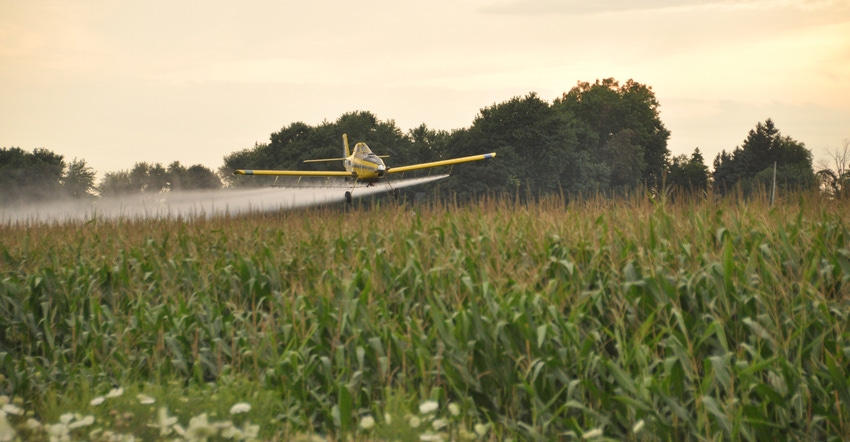
The questions are flowing through your head as you plan your fungicide program for the new crop year. What worked in 2021? Will fungicide fit in the budget against other input costs? Seth Logan, Advanced Agrilytics precision agronomist in southern Illinois, reminds farmers of the importance of fungicide in 2022.
“As we look toward 2022, we are in somewhat of a unique position. We are coming off a year [2021] in which we saw great benefits to plant health and subsequent yield increases with the use of one or more applications of fungicide,” Logan says. “But heading into 2022, we are also faced with increased input costs and possible supply shortages across the board. Having a plan for how to approach those decisions is very important.”
While it’s important to budget and know your financial limits, fungicide has proven to pay off over the years in both corn and soybeans, he says. Think cautiously and carefully before you cut back on fungicide application.
“Chances are, based on what we have found with year-over-year fungicide use, there are a number of ways a fungicide application can pay heading into 2022,” Logan says — especially when it comes to disease protection.
In 2021, a multitude of diseases affected Illinois corn plants. Southern rust put a lot of pressure on plants around tassel emergence and early reproductive stages. Tar spot affected nearly the entire state at varying levels of severity. And crown rot and a whole host of stalk diseases were also prevalent in 2021, particularly in areas with above-average rainfall in June or July, Logan explains.
So, in some parts of the state, there was a perfect storm of diseases attacking a plant in multiple stages and in multiple parts of the plant itself. This provided some of the largest financial benefits to fungicide seen in recent years.
Look at 2022
But will it be worth the cost in 2022? Think about the key benefits and use fungicide to address a specific need, don’t just pencil it in with a blanket approach, he says.
“Obviously the most common reasons we spray fungicide are to protect our yield potential by protecting the plant from disease,” Logan says. “But fungicides also have a lot of other properties to them.”
Think stress relief.
Logan and others at Advanced Agrilytics use in-field research to constantly evaluate stressful points of the growing season. Timely fungicide applications — before periods of water limitations, or before or immediately following soil saturation — may help the plant mitigate these stressful periods.
“We think of [applying] fungicide at all times from V5 to R3 and evaluate whether we should use an application of fungicide at all those different points,” he says. “The goal is to utilize all the tools we have to keep the plant free of stress at all times. That stress can be weather- or disease-induced, which brings up the two-application scenario we may be in now.”
That’s right — two fungicide applications.
“We’re really forced to go that direction because of the complexity of diseases that we have today,” Logan says. Development of diseases such as southern rust and tar spot and their ability to spread across Illinois can cause a drastic reduction in yield. So, prevention may require two fungicide applications.
But, at what points in the growing season? Appropriate application timing will depend on the disease you’re facing, Logan says.
So, stay on your toes in 2022.
“It’s certainly going to be easy to pencil in fungicide based on this year’s results as well as results from the past — that’s my recommendation [right now],” he says. “But I don’t ever make a recommendation specific to a product or timing until we approach that application timing.”
Why not decide specifics now?
“Fungicide application needs to be both proactive and targeted, especially when dealing with tar spot or southern rust,” Logan says. “To be proactive, you need to be in the field looking and always thinking about what’s next; taking into account crop stage, the weather of the last seven to 10 days and the next seven to 10 days, and how these will influence the disease you are trying to prevent.
“These factors will direct your management decision in terms of timing, product and specifically, mode of action.”
And let’s face it, Mother Nature is in control.
“We can’t determine the weather, when disease develops or the disease that develops,” Logan explains. So, it’s important to work with your local agronomist and try to make the best decision at the time.
Logan stresses, “Due to circumstances of this year in terms of input costs and supply, be sure to have a plan, but making a complete decision now about what you will do during the growing season may not be the best way to approach your fungicide application. If your goal is to produce the highest number of bushels you can, planning to utilize fungicide applications in 2022 will be in your best interest.
About the Author(s)
You May Also Like






